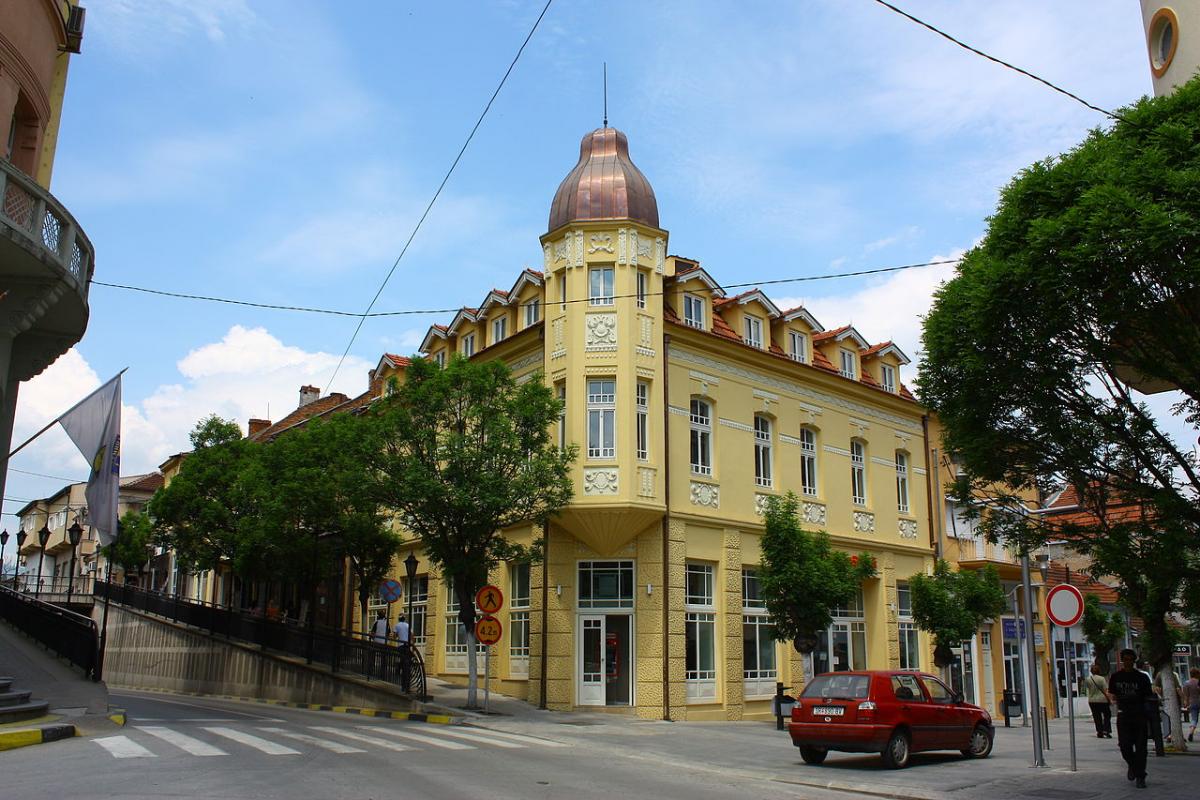The on-site part of JBOI 2023 will take place in Macedonia, in the city of Strumica.
The country’s political, cultural, economic, and academic center is Skopje. Suggested arrival airport is International Airport Skopje.
In the long history of Skopje almost all Balkan countries/nations are mentioned. We are glad to host all participating teams at JBOI here.

The territory of Skopje has been inhabited since at least 4000 BC; remains of Neolithic settlements have been found within the old Kale Fortress that overlooks the modern city centre. On the eve of the 1st century AD, the settlement was seized by the Romans and named Scupi. When the Roman Empire was divided into eastern and western halves in 395 AD, Scupi came under Byzantine rule from Constantinople. During much of the early medieval period, the town was contested between the Byzantines and the Bulgarian Empire, whose capital it was between 972 and 992. From 1282, the town was part of the Serbian Empire and acted as its capital city from 1346. In 1392, the city was conquered by the Ottoman Turks who called the town Üsküp. In 1912, it was annexed by the Kingdom of Serbia during the Balkan Wars and after the First World War the city became part of the newly formed Kingdom of Serbs, Croats and Slovenes (Kingdom of Yugoslavia). In the Second World War the city was conquered by the Bulgarian Army, which was part of the Axis powers. In 1944, it became the capital city of Democratic Macedonia (later Socialist Republic of Macedonia), which was a federal state, part of Democratic Federal Yugoslavia (later Socialist Federal Republic of Yugoslavia). The city developed rapidly after World War II, but this trend was interrupted in 1963 when it was hit by a disastrous earthquake. In 1991, it became the capital city of an independent Macedonia.
Skopje is located on the upper course of the Vardar River, and is located on a major north-south Balkan route between Belgrade and Athens. It is a center for metal-processing, chemical, timber, textile, leather, and printing industries. Industrial development of the city has been accompanied by development of the trade, logistics, and banking sectors, as well as an emphasis on the fields of transportation, culture and sport. Skopje has a population of aprox. 600 000 inhabitants.
The city of Strumica
Strumica is the largest city in southeastern Macedonia, near the Novo Selo-Petrich border crossing with Bulgaria. About 55,000 people live in the region surrounding the city. It is named after the Strumica River which runs through it. The city of Strumica is the seat of Strumica Municipality.



According to archeological findings, settlement of the area dates back to 6000–5000 BC: a Neolithic settlement (Stranata) located near the village of Angelci, as well as findings from the Emperor’s Towers site near Strumica, where traces of a prehistoric culture existed from the early 4th to mid 3rd millennium BC were discovered. The area was populated later by the Paionians.
The first mention of the city under the name Astraion is in 181 BC regarding the execution of Demetrius, brother of the Ancient Macedonian king Perseus (179–168 BC), son of Philip V of Macedon (221–179 BC). The name Astraion came from the Paionian tribe called Astrai. In 148 BC the region became a Roman province. In the Roman period the city changed its name to Tiberiopolis, which is evidenced by a marble statue base dedicated to the patron Tiberius Claudius Menon, who lived between the late 2nd and early 3rd century AD.
In the 6th and 7th centuries, the Roman town became subject of Slavic migration. The Strymonites, a Sclavene tribe, adopted their name after the Strymon river (Struma). The Strymonites were independent until the 9th century, followed by a Byzantine reconquest.
Under Ottoman administration, the town was named Ustrumca.
In the 17th century, it became seat of a kadiluk. At about this time, Strumica was visited by the Ottoman travel writers Haji Kalfa (1665) and Evliya Çelebi (1670), who gave a description of the city.
After the II world war Strumica is in the Socialist Republic of Macedonia, one of the republics of Federal Yugoslavia. With the referendum on 8 September 1991, amid the breakup of Yugoslavia, the country became independent under the constitutional name Republic of Macedonia.

